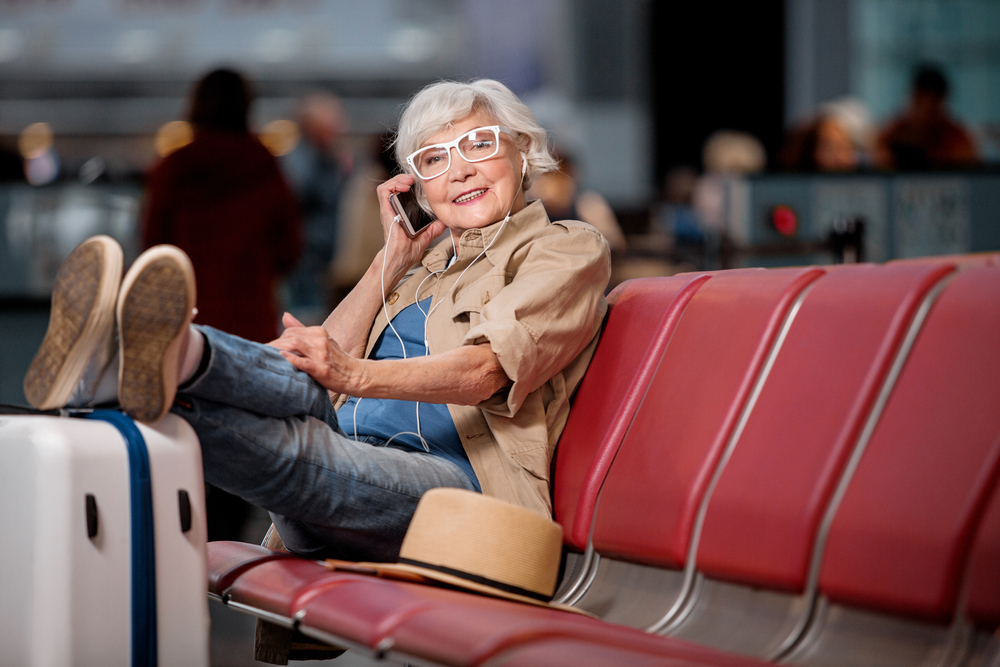Seniors traveling alone represent a growing demographic embracing independent adventures. This guide delves into the practical considerations, safety measures, and enriching experiences that make solo senior travel both rewarding and manageable. From meticulous planning and health considerations to combating loneliness and leveraging technology, we aim to equip seniors with the knowledge and confidence to embark on fulfilling journeys.
We will explore various aspects, including choosing suitable destinations, managing finances, and staying connected with loved ones. The focus remains on empowering seniors to navigate the world independently, safely, and with a sense of purpose, ensuring their trips are not only enjoyable but also enriching and memorable.
Safety and Security Concerns for Solo Senior Travelers
Traveling solo as a senior citizen offers unparalleled freedom and independence, but it also presents unique safety and security challenges. Understanding these potential risks and implementing proactive strategies is crucial for a worry-free and enjoyable journey. This section details common concerns across various travel modes and offers practical solutions for mitigating these risks.
Safety Concerns by Travel Type
Solo senior travelers face different safety concerns depending on their mode of transportation. Air travel may involve navigating crowded airports and managing luggage independently. Land travel, whether by car, train, or bus, presents risks of theft, accidents, and navigating unfamiliar environments. Sea travel introduces potential hazards associated with maritime conditions and onboard safety.
Air Travel Safety
Common concerns include navigating large airports, managing luggage, and potential health issues during long flights. Strategies to mitigate these risks include booking assistance with airlines for wheelchair assistance or special needs, arranging airport transfers in advance, and packing light to avoid strenuous lifting. Familiarizing oneself with the airport layout beforehand and keeping important contact information readily accessible is also vital. For health concerns, carrying necessary medications, a copy of medical records, and contacting one’s doctor about travel plans is recommended.
Land Travel Safety
Land travel, especially in unfamiliar areas, presents several challenges. These include the risk of theft, accidents, and getting lost. To minimize these risks, travelers should inform family or friends of their itinerary, avoid displaying expensive jewelry or large amounts of cash, and use reputable transportation services. Using GPS navigation, staying in well-lit and populated areas, and being aware of surroundings can significantly reduce the chances of incidents. Carrying a personal safety alarm can also provide an added layer of security.
Sea Travel Safety
Sea travel introduces unique safety considerations. These include potential seasickness, accidents onboard, and navigating unfamiliar ports. Travelers should consult their doctor regarding seasickness remedies and pack appropriate medication. Familiarizing oneself with the ship’s safety procedures and emergency exits is essential. Keeping valuables secure and being mindful of personal belongings is also crucial. In unfamiliar ports, sticking to well-lit and populated areas and arranging pre-booked transportation is recommended.
Travel Insurance for Solo Senior Travelers
Choosing the right travel insurance is paramount for solo senior travelers. Policies vary significantly in coverage and cost. The following table compares different options, highlighting key features:
| Insurance Provider | Coverage Details | Medical Expenses Coverage | Approximate Cost (Annual, Example) |
|---|---|---|---|
| Provider A (Example) | Emergency medical evacuation, trip cancellation, lost luggage | $500,000 | $500 |
| Provider B (Example) | Emergency medical evacuation, trip interruption, personal liability | $1,000,000 | $750 |
| Provider C (Example) | Basic medical coverage, trip cancellation, baggage delay | $250,000 | $300 |
Social Interaction and Loneliness Mitigation
Solo travel, while offering incredible freedom and self-discovery, can sometimes lead to feelings of loneliness, particularly for senior travelers. Combating this requires proactive strategies to foster social interaction and build a sense of community, both during travel and within the chosen destinations. Fortunately, numerous resources and approaches exist to make solo senior travel a rewarding and socially enriching experience.
It’s crucial to remember that combating loneliness while traveling alone involves a multi-faceted approach. This includes actively seeking opportunities for social interaction, choosing travel styles that encourage engagement, and utilizing technology to stay connected with loved ones back home. Proactive planning is key to a fulfilling and socially connected solo trip.
Senior-Friendly Activities for Social Interaction
Engaging in activities designed to encourage social interaction is vital for combating loneliness. These activities should be chosen based on individual interests and physical capabilities. Many activities offer built-in social opportunities. For instance, joining a guided walking tour allows for interaction with the guide and fellow participants, offering a chance to share experiences and learn from others. Similarly, taking a cooking class provides a structured environment for socializing while learning a new skill. Other options include attending local events like festivals or concerts, joining a book club at a local library, or participating in a day trip organized by a local tour operator. The key is to choose activities that align with personal preferences and ensure a comfortable level of engagement.
Community-Based Travel Programs for Seniors
Several organizations specialize in creating travel experiences specifically designed for senior solo travelers. These programs often incorporate group activities and opportunities for social interaction. For example, Road Scholar (formerly Elderhostel) offers educational travel programs for adults of all ages, with many trips specifically catering to mature travelers. These programs typically include group excursions, lectures, and social events, fostering a sense of community among participants. Other organizations, both national and local, may offer similar programs focusing on specific interests, such as historical sites, nature, or cultural immersion. These programs provide a structured environment to meet like-minded individuals and share experiences.
Connecting with Local Communities and Fellow Travelers
Connecting with local communities and fellow travelers can significantly reduce feelings of isolation. One effective method is to stay in accommodations that encourage social interaction, such as guesthouses or bed and breakfasts, rather than isolated hotels. These smaller establishments often provide opportunities for informal conversations with the owners and other guests. Furthermore, engaging with locals by participating in local events, visiting local markets, or simply striking up conversations with shopkeepers can create meaningful connections and foster a sense of belonging. Utilizing social media platforms or travel forums dedicated to solo travelers can also help connect with others before, during, and after a trip, allowing for potential meet-ups and shared experiences. These connections can provide a valuable support system and enhance the overall travel experience.
Closing Notes
Embarking on solo adventures as a senior is an empowering experience, offering opportunities for self-discovery and personal growth. By carefully considering safety, health, and logistical factors, and by embracing the support systems available, seniors can confidently explore the world on their own terms. This guide serves as a starting point for planning a safe, fulfilling, and unforgettable journey, encouraging seniors to embrace the freedom and joy of independent travel.




